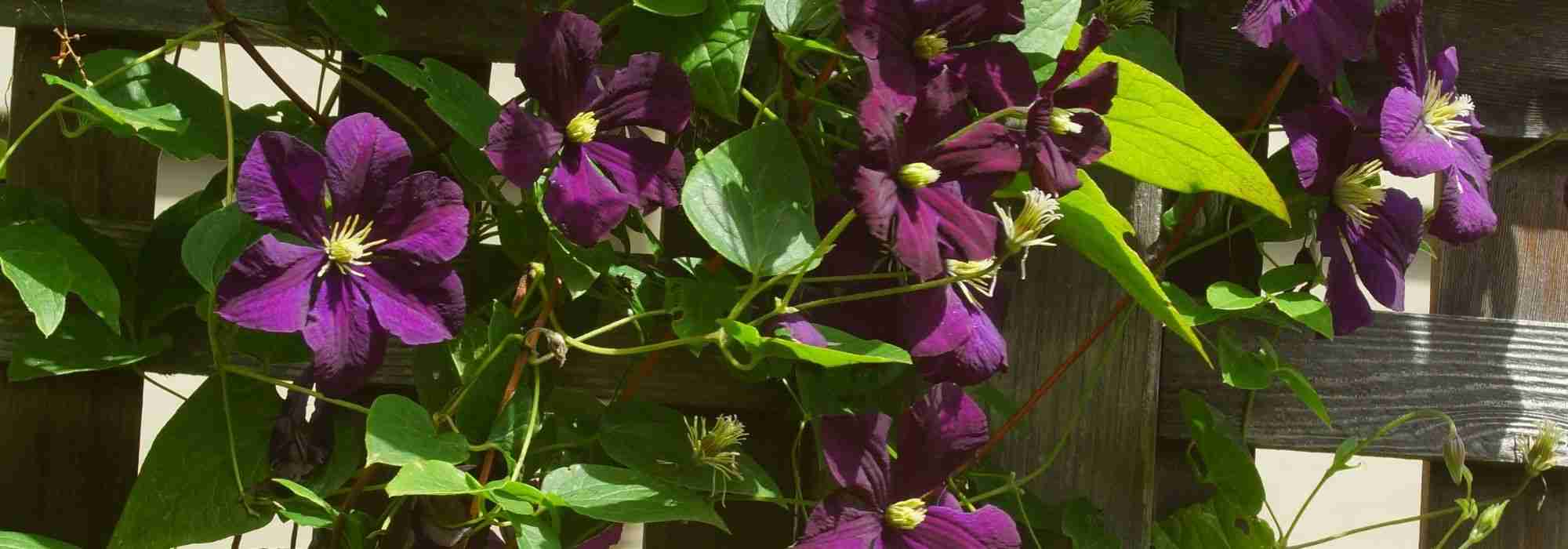
Climbing plant: the different support systems
Climbing roots, suckers, voluble stems, tendrils or thorns: they naturally cling
Contents
There are climbing plants to meet all needs and fit into all garden styles.
Annual climbers or perennials, for pots or open ground, for sunny or shaded situations, from the smallest to those reaching several metres in height, you will surely find the ideal climber.
But what also differentiates these climbers and helps in making a choice is their climbing mechanism. These plants use various methods to climb along a support, whether natural or man-made.
Knowing the climbing mechanism of a climber allows for the selection of the appropriate type of staking or training for the plant in the long term, enabling it to grow well vertically and to make the most of its aesthetic qualities.
Let’s take a look at the strategies developed by climbing plants to gain height in the garden.
Climbing plants with climbing roots
These are plants capable of colonising any support, even the smoothest surfaces. They rise autonomously, without the need for staking or trellising.
Their anchoring system consists of climbing roots or aerial roots, which adhere firmly to the surface, at the slightest crevice or the smallest crack. These climbing plants are ideal for dressing a wall, enhancing an old tree or concealing an unsightly structure.
Among them, we have ivy (Hedera helix), trumpet vine (Campsis), climbing hydrangea, or even spindle (Euonymus fortunei).
The downside of this autonomous anchoring system? It can eventually damage the supports, exacerbate cracks, detach plaster, or lift tiles. However, on a healthy support, it would be easier to remove and would cause little to no damage.
These self-climbing plants do not require human intervention to grow, but nothing stops you from guiding them along a support to control their spread. Often, their rapid and exuberant growth will require regular pruning to be managed in any case.
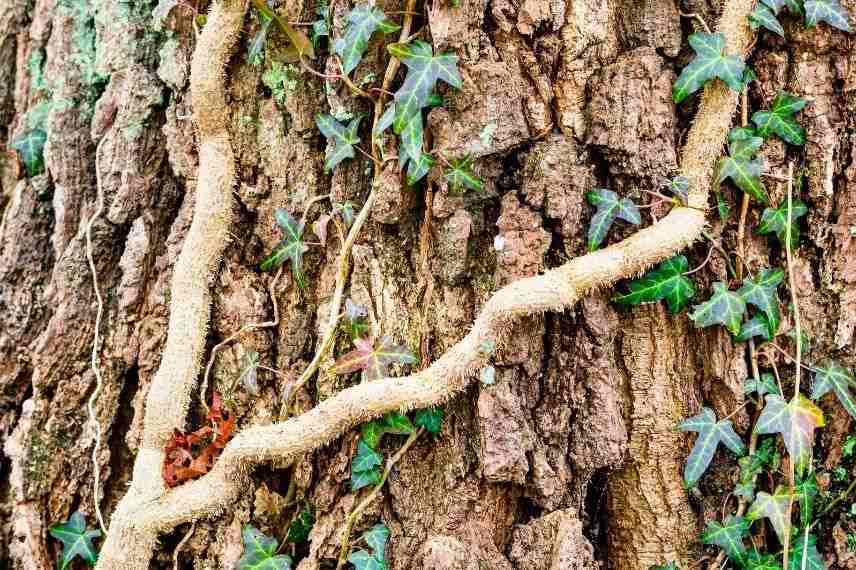 Hedera helix (Ivy) attaches using small brush-like roots present on its stems
Hedera helix (Ivy) attaches using small brush-like roots present on its stems
Climbing plants with suction cups or adhesive pads
The attachment systems of these plants can resemble those used by certain marine animals, such as octopuses or cuttlefish. Like climbing plants with climbing roots, they vigorously climb all types of supports, even the smoothest, using small discs or small cushions that adhere. These are aerial organs that originate from the plant’s stem.
This is the case, for example, with the Virginia creeper or ornamental vine.
What’s their advantage? They are significantly less destructive to supports than climbing plants with climbing roots, but do avoid them on sandy or crumbling render. These plants will securely dress walls, facades, trees, or even unsightly posts.
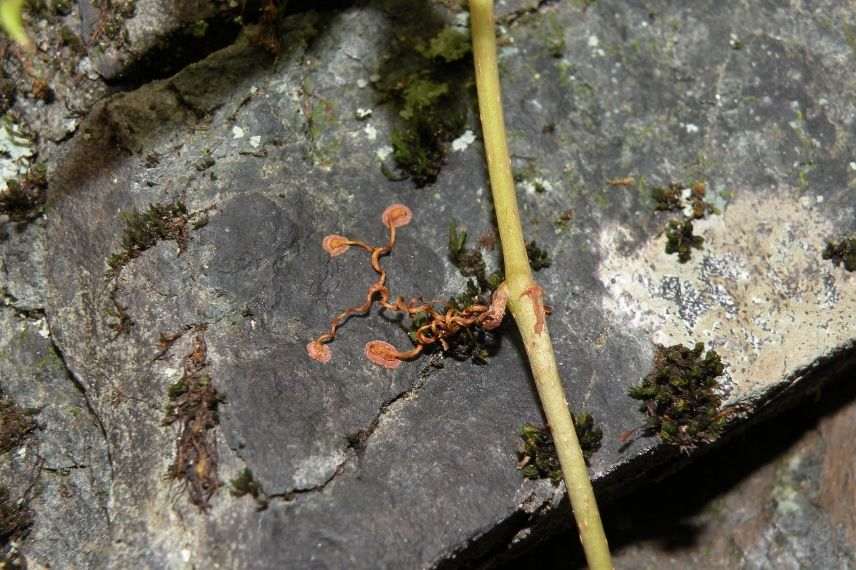
Suction cups of Parthenocissus quinquefolia or Virginia creeper with five leaflets (photo Doug McGrady – Flickr)
Discover other Climbers
View all →Available in 0 sizes
Available in 0 sizes
Available in 0 sizes
Available in 0 sizes
Available in 0 sizes
Available in 1 sizes
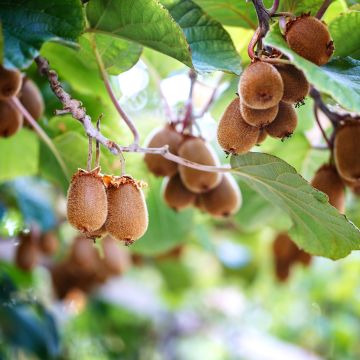
Available in 2 sizes
Available in 1 sizes
Available in 1 sizes
Climbing plants with voluble stems
With these climbing plants, it is the particularly flexible stems or petioles that naturally wrap around nearby supports: fencing, railings, pergolas, arbors, other vegetation, etc. These plants are ideal candidates for dressing a fence and charmingly concealing a view.
In the absence of these supports, they will require staking: simple wires for the lighter ones, stakes, or even sturdy trellises.
Unlike climbing plants with climbing roots or suckers, they cannot cling to a wall or smooth structure by themselves. Without a structure to help them climb, their silhouette will become creeping and the plant can then be used as ground cover.
Among them, we find both annuals and perennials:
- the honeysuckle
- the morning glory
- the akebia
- some varieties of jasmine
- the wisteria
- the dipladenia
- the hops
But this type of climbing plant can also be found in the vegetable garden, such as with climbing beans, for which it is possible to use climbing nets or thick strings stretched between sturdy posts to support their growth.
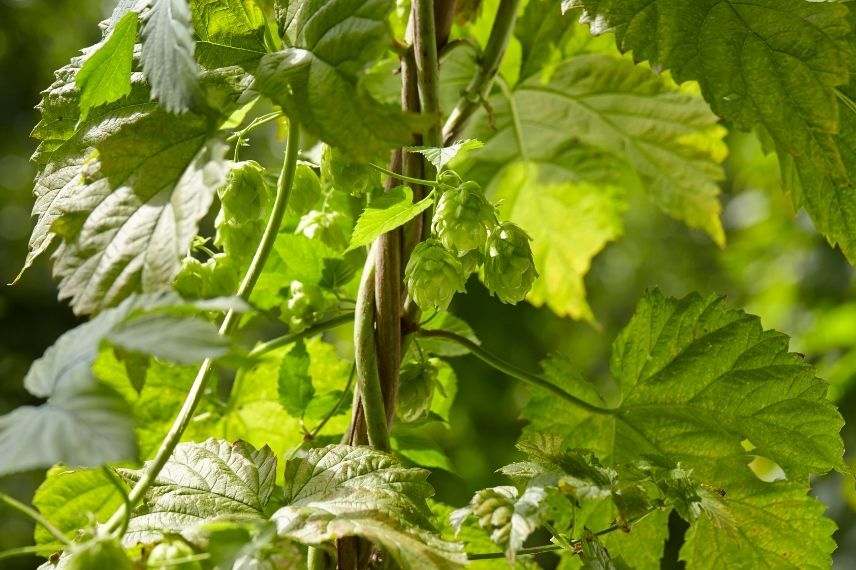
Voluble stems of Humulus lupulus (Hops)
Climbing plants with tendrils
These climbing plants operate in the same way as twining climbing plants. But here, it is their tendrils, generally arising from modified stems originating from the axil of the leaves (petioles), that allow them to cling. Like little lassos, these tendrils then wrap around themselves around nearby supports: tree, bush, fence, or trellis. On an arch or pergola, they will beautifully green an entrance.
In the absence of natural supports, these plants cannot anchor themselves and will behave as creeping plants. Therefore, plan for trellising or stakes to help them gain height.
In this category, we again mention both annuals and perennials:
- the clematis
- the passion flower
- the scented pea
- the nasturtium
- the grapevine
In the vegetable garden, certain squashes, cucumbers, or gherkins also use this method of attachment and can be trained vertically on a mesh frame or with tipi stakes.
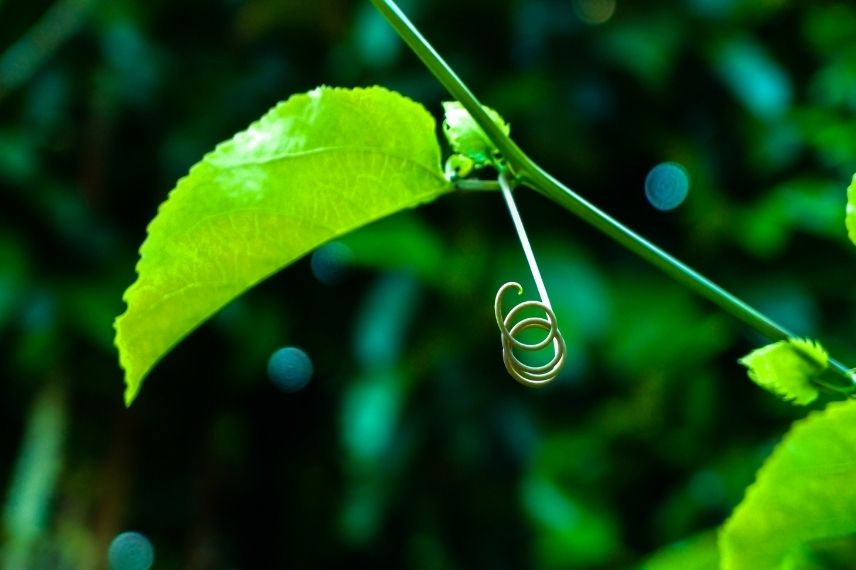
Tendrils present at the axil of a leaf
Climbing thorns
A lesser-known but equally effective climbing system: some plants use their thorns as sort of hooks curved downwards, to climb upwards and cling to supports. These are generally climbing or woody plants, with long and flexible stems.
The climbing roses or rambling roses are certainly the most well-known in this category, but you can also find bougainvilleas or brambles.
These climbing plants require a horizontal support to help them climb well, to which the stems of the plants will be loosely attached. For example, use sturdy wires securely fastened to stakes at multiple heights as support.
This training will be essential if you wish to guide your thorny climbers to dress a wall or structure. They cannot tackle these supports on their own without assistance.
These climbers will beautifully adorn walls or facades, adding a lot of volume.
In the vegetable garden, raspberries can fall into this category of thorny climbers.
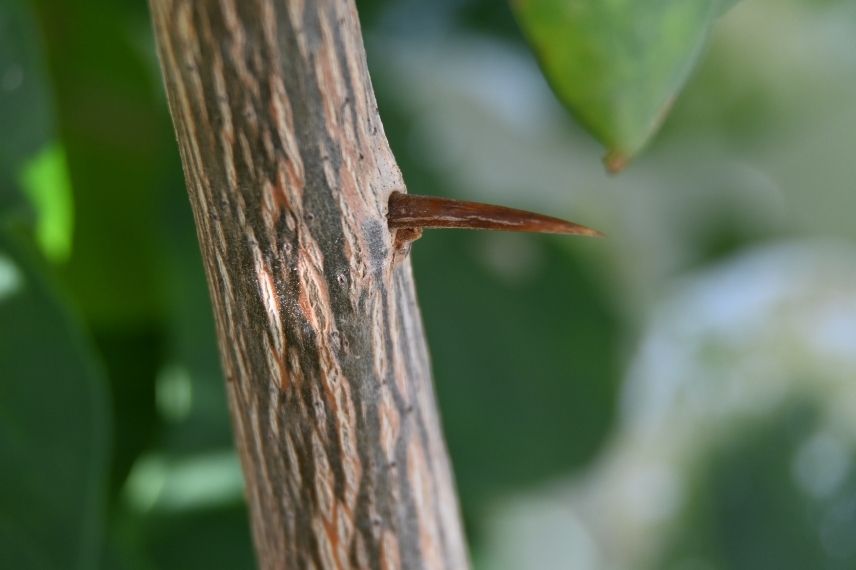
Bougainvillea Thorn
The weight of the climbing plant: an additional factor to consider
Beyond the climbing method used by the climbing plant, which allows for the selection of an appropriate support, another essential point to consider is the weight of the plant. This information will help ensure successful staking or training in the long term, as the plant grows and/or bears fruit.
Some of them can indeed become particularly vigorous as they grow and will require a sturdy and well-secured support to last over time. This is the case, for example, with wisteria, whose lignified branches can break or bend wires, cables, and stakes.
Similarly, large liana roses will need tall and sturdy supports to bear their weight and prevent the branches from eventually drooping.
- Subscribe!
- Contents
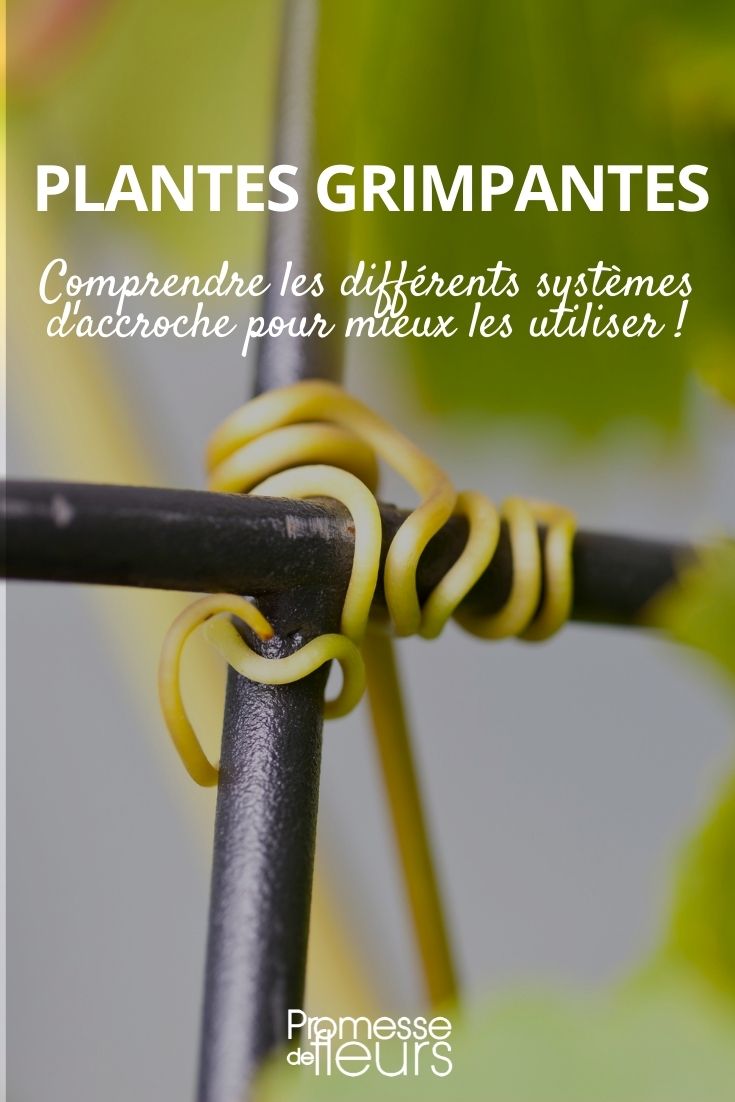































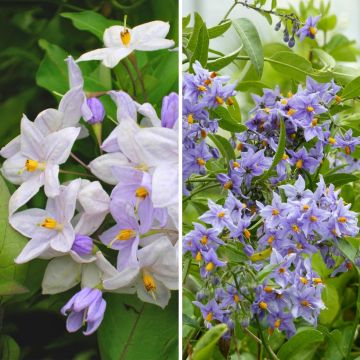
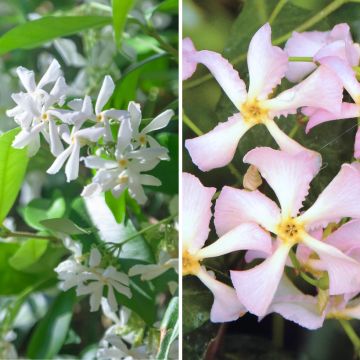

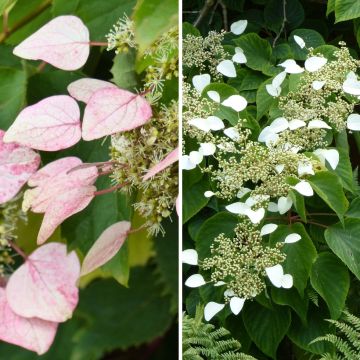
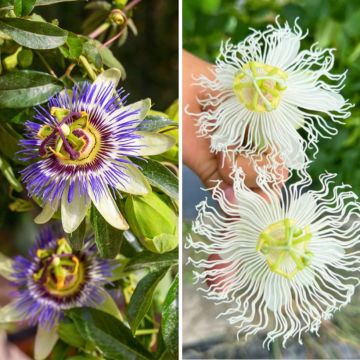

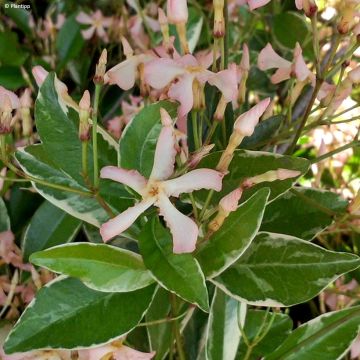
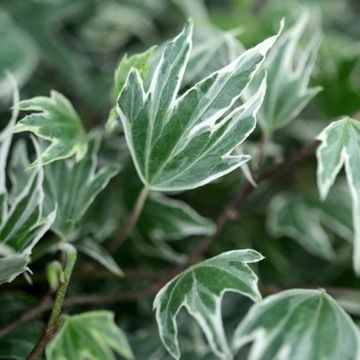
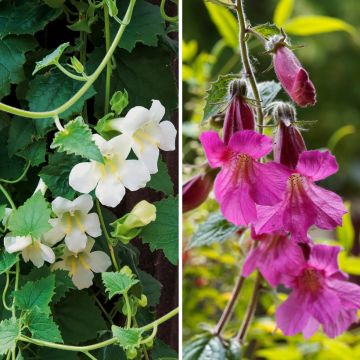
Comments